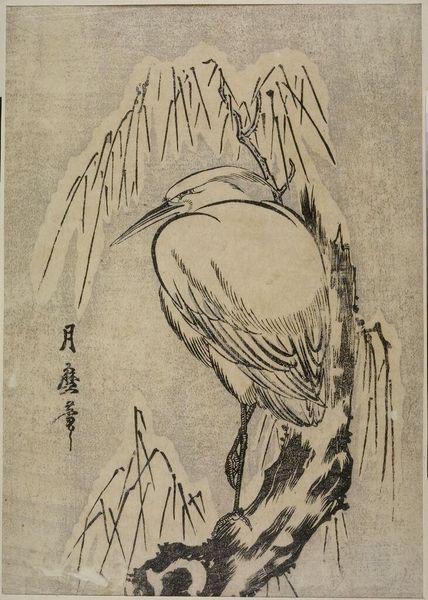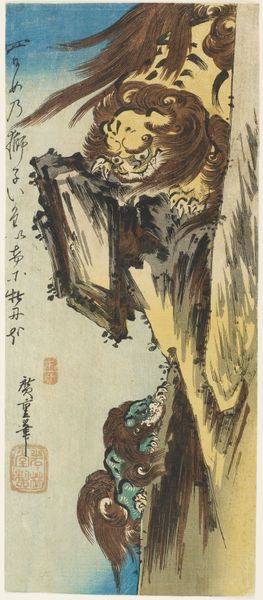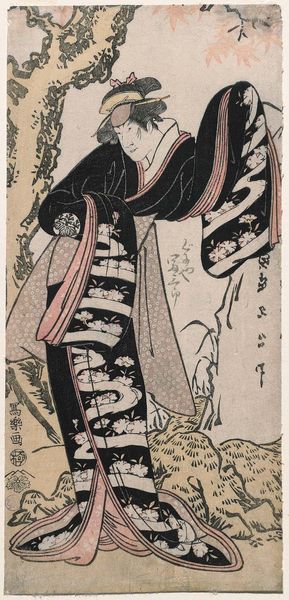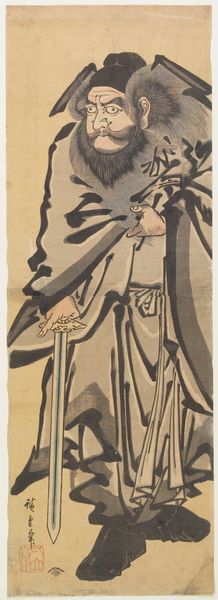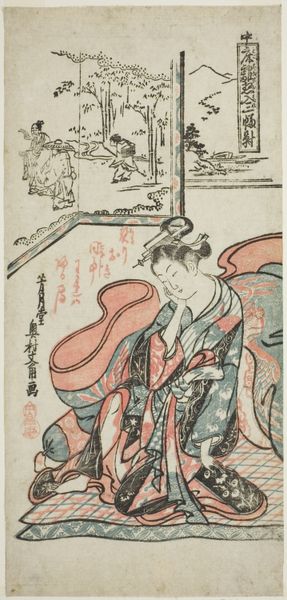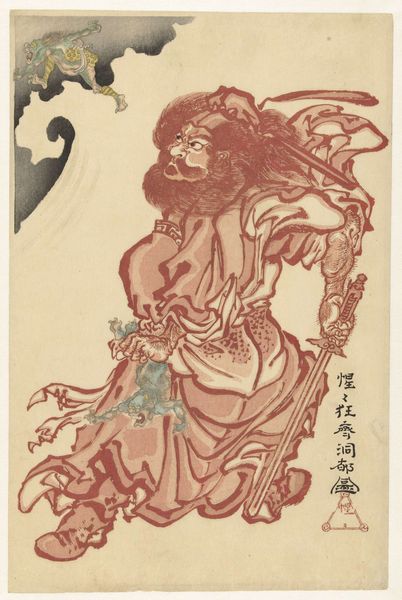
Shoki (Chinese: Zhong Kui), the demon queller, standing on a bridge c. 1765 - 1770
0:00
0:00
print, paper, woodblock-print
#
portrait
#
narrative-art
# print
#
asian-art
#
ukiyo-e
#
japan
#
paper
#
woodblock-print
Dimensions: 28 × 5 1/8 in.
Copyright: Public Domain
Curator: This is a Japanese woodblock print by Suzuki Harunobu, titled "Shoki (Chinese: Zhong Kui), the demon queller, standing on a bridge," created around 1765 to 1770. Editor: My immediate reaction is the dynamic energy in this small space. The lines representing water give such movement. The figure seems formidable but strangely… compact? Curator: Indeed. Harunobu was a master of *ukiyo-e*, and the medium itself, a woodblock print on paper, is significant. The labor involved in carving the blocks, the multiple printings, each step involves craftmanship that's frequently overlooked in the art historical narrative. Editor: Precisely, and thinking about the historical context, these prints weren’t necessarily created for wealthy patrons. The rise of a merchant class created new markets. What messages were accessible and who got to participate in them? What narratives are elevated and repeated about power, gender, and social order? Curator: That's relevant when considering Shoki, who in legend is this powerful figure that exorcises demons. It's interesting how such an auspicious figure is rendered here; you sense both authority and vulnerability. How was Harunobu able to control the consistency, transfer, and application of ink when dealing with the printing blocks? Editor: Absolutely. His expression and bearing carry this internal conflict, straddling that bridge... Symbolically it is very loaded, since he could be safeguarding that transition, not just between spaces, but ways of thinking. Given the economic disparities of the time, there were undoubtedly demons to quell! Curator: What remains so compelling is how he manipulates the medium to create this effect. The texture of the beard, for instance, compared to the relative smoothness of the hat. I am curious about what tools did Harunobu use. Where did his blocks come from and how were they made? Editor: Well, perhaps Harunobu intended the audience to consider the material and the ephemeral as intertwined elements. Even this single work is ripe with social implications. Thinking of the artist’s socio-economic location adds to our understanding of what Harunobu might be addressing. Curator: Exactly. Thinking about the labor that goes into its production changes how we value it, and how we interpret it. Editor: I agree. By interrogating its context and materials, we find a rich conversation about this demon queller.
Comments
No comments
Be the first to comment and join the conversation on the ultimate creative platform.

